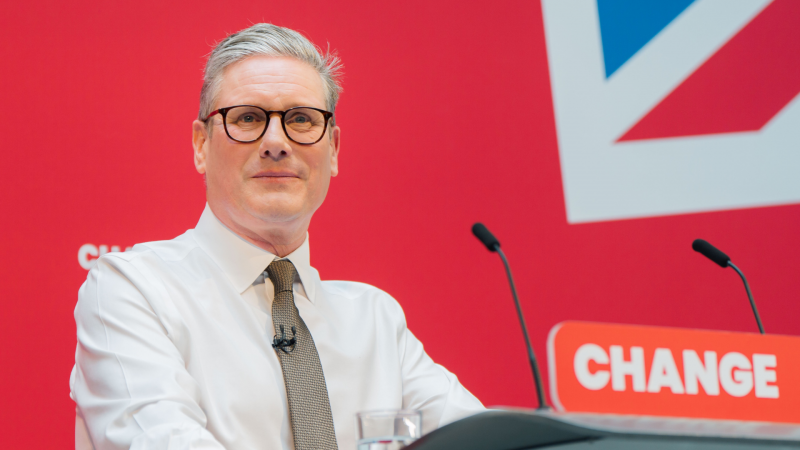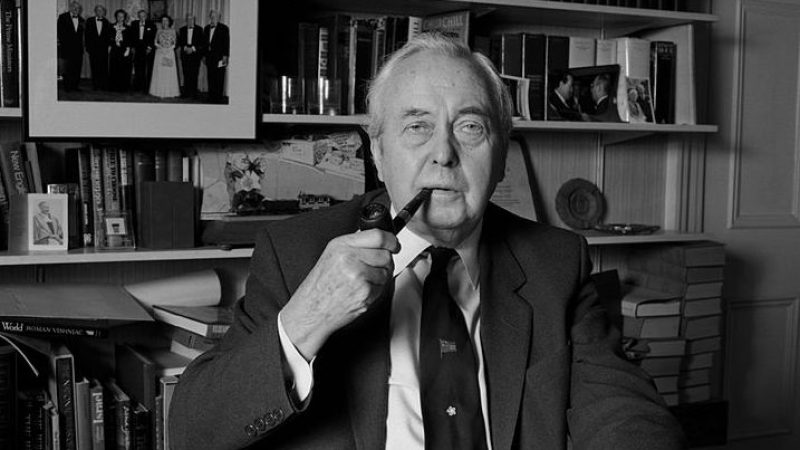UK
2024 manifesto versus 1997: ‘There are big similarities, but big differences’

Since the first polls of the official election campaign came out earlier this month, there has been talk of Labour repeating its 1997 landslide.
And now we have Labour’s 2024 manifesto, further similarities are in evidence. Like Tony Blair’s 1997 New Labour manifesto, Keir Starmer’s document makes education and health the central policy priorities. Both manifestos promise to be tough on crime, abolish hereditary peers in the House of Lords and devolve more powers to the regions.
There are also some important differences. Chief among these is that 2024 Labour is promising less spending than 1997 Labour, and yet more state intervention. This divergence shows a significant development in the party’s approach to economic growth. It is a welcome departure from the Conservative and New Labour, market-led, neoliberal consensus on economic growth.
Both manifestos promise to improve the quality of education for school children, expand pre-school learning, expand lifelong education, improve pupil-teacher ratios and reform tertiary education. However, Blair promised, in nominal terms, twice as much spending in education in 1997 than Starmer is promising in 2024 (£3 billion against £1.5bn).
Both manifestos promise to invest in the NHS and to cut waiting lists. Both manifestos promise to introduce a living wage. The minimum wage was a Labour electoral promise and they introduced it in 1999. In 2024 Labour is promising to legislate a minimum wage that is a real living wage.
Both manifestos state that Labour are not big spenders, but wise spenders. In both manifestos, the party is very careful to distance itself from its “tax and spend” image.
In both manifestos, the party promises not to raise income tax. As in 1997, the party defends this choice on the grounds that average working families already face a high tax burden. Here, one might also find a similarity between 1997 and 2024 in what the manifestos do not explicitly say.
In 1997, the Labour manifesto attacked the Conservatives for cutting capital gains tax, without making a specific pledge in either direction. In 2024 Starmer and his future chancellor of the exchequer haven’t promised they won’t raise capital gains tax.
Spotting the change
So, in many ways, Starmer has taken Labour back to Tony Blair’s third way social democracy. This is not surprising as he, like his predecessor, is trying to build the winning middle and upper middle class coalition that will bring the party to power.
But I believe the 2024 manifesto does actually contain some radical policy proposals. Blair and New Labour were very much tied to the neoliberal dogma of free markets, where economic growth is primarily driven by the private sector. Housebuilders and investors were facilitated with predictable and favourable tax policies while the government helped them further with its own investments in human capital (education and health).
Starmer’s Labour party goes further. The 2024 Labour manifesto promises to create Great British Energy, a state-owned energy company that will invest in green energy. This is a significant departure from providing incentives to private companies; it is a recognition that the state has a significant, independent role to play in energy transition.
It also promises to create a national wealth fund that will invest in public infrastructure, such as ports and hydrogen technology. Once more, this is a considerably more statist approach to public investment than we have seen in the UK. Both these policy promises depart significantly from the 1997 New Labour manifesto and economic growth plan. They are bolder at endorsing state-led growth initiatives.
Why is it here that divergence with New Labour becomes apparent? There are probably a few reasons, including the failure of the private sector to invest in infrastructure and increase productivity.
But the 2024 Labour manifesto should primarily be understood as representing Labour’s electoral coalition – of working and middle class voters. Yet, unlike in 1997, it is not a coalition solely bound by cheap credit and ever rising asset and property price rises, but by a need for the state to intervene to bring back growth via a centrally planned industrial strategy.
Since the early 1980s and Thather’s right to buy scheme, Conservative and Labour governments, alike, have deregulated the banking and financial sector making mortgages more accessible and cheaper. This credit-led, house price inflation benefits landlords and the better-off middle class and widens inequality.
The unaffordability of housing feeds political polarisation making New Labour’s 1997 coalition hard to repeat. Starmer and Labour are being called upon to offer a new working and middle class coalition that cannot be driven by consumption. It can only be driven by investment, higher skills and higher wages.
It is the ultimate case of a “supply-side” social democratic strategy that aims to reconcile two things – the demand for higher wages and quality of life among the working and middle classes and the fiscal frugality demanded by capital holders and higher income earners.
As political scientist Carles Boix argued in his seminal work, this coalition is best forged through wise investment in human and physical capital and macroeconomic stability. The key questions for Starmer at this stage are whether this coalition is a lasting one, and whether his team can achieve the much sought-after economic growth that will bring this plan to realisation.
This article is republished from The Conversation under a Creative Commons license. Read the original article on the site here.
‘A troubled history: Leaders and their manifestos, from MacDonald to Wilson’
Steven Fielding

“Labour policy is directed to the creation of a humane and civilised society.” So announced Labour’s Appeal to the Nation, the party’s 1923 manifesto.
This was the one on which it fought the general election that saw Ramsay MacDonald become Prime Minister and form in January 1924 the first Labour government, inaugurating what the party recently described as its Century of Achievement.
A document of little more than 1,000 words, it was very different to Labour’s 23,000- word long manifesto which this week was launched across all media platforms. The 1923 manifesto was a wonderfully vague document with hand-waving references to Labour’s commitment to the scientific organisation of industry, the abolition of slum housing and equality between men and women.
It even concluded with an appeal to voters ‘to oppose the squalid materialism that dominates the world today’. If this suited the windy rhetoric of Labour’s leader the manifesto still promised the party would nationalise the coal, rail and electricity industries as well as impose a wealth tax on fortunes in excess of £5,000 (the equivalent of £400,000 today).
MacDonald signed off on these commitments, which pleased many in his party, expecting to see the return of Stanley Baldwin’s Conservatives to government.
MacDonald saw the manifesto like the Greens do today
Just like the Green Party leadership today he saw the election as a propaganda opportunity, to build up the party vote and win a few more seats. Just like everybody else MacDonald was shocked to find himself, thanks to the vagaries of three-party competition under first past the post, forming a minority administration.
The alacrity with which MacDonald set aside the most eye-catching policies in the manifesto was criticised by the Labour left some of whom urged him to present it in full to the Commons and dare Liberal and Conservative MPs to vote it down.
That, they inevitable would have done, after which the left wanted MacDonald to call another election thinking it would mobilise more support for their idea of socialism.
READ MORE: ‘No surprises, but fear not: Labour manifesto is the start, not the end’
Instead, hoping to demonstrate they could be trusted to hold the reins of government, MacDonald and his Cabinet followed a more cautious course, trying to win support in the Commons for a variety of more modest reforms the most notable of which was the 1924 Housing Act. This provided central government funds to subsidise the building of over half a million council homes until it was repealed in 1933.
The legislation had not even been thought of when the manifesto had been written. As a result of MacDonald’s fast-and-loose attitude to the manifesto Labour increased its vote at the December 1924 election by nearly 25 per cent although it still lost office.
Wilson had no intention of delivering manifesto wealth tax pledge
Since then, Labour leaders coming from opposition into government have had a variable and complicated relationship with their party’s manifesto. At one extreme was Clement Attlee whose government more than lived up to the promises of Let Us Face the Future in 1945 – although much of that programme had already been put into practice during the Second World War.
At the other end of the spectrum was Harold Wilson. Labour’s February 1974 manifesto promised to introduce a wealth tax as part of ‘a fundamental and irreversible shift in the balance of power and wealth in favour of working people and their families’. This Wilson had absolutely no intention of delivering.
READ MORE: ‘Labour manifesto shows a new centrism – with the state key to driving growth’
Like MacDonald, Wilson was taken aback when he found himself unexpectedly at the head of a minority government even though Edward Heath’s Conservatives had won more votes. Even after winning a modest Commons majority in October Wilson set his face against the platform on which he had ostensibly won power.
For this ‘betrayal’ Wilson and his successor Jim Callaghan was not forgiven by the Labour left, which took its revenge after Labour lost in 1979, blaming defeat on the failure of the Parliamentary leadership to live up to the manifesto’s socialist ambition. Labour’s manifesto this time round has been written with the intention of providing Keir Starmer with a relatively ‘serious’ and ‘fully-costed’ programme for government.
Could Labour still opt for a wealth tax?
Evoking Labour’s 1997 manifesto – and not just in how heavily it features pictures of the Labour leader – it falls short of what many in the party would like to see. But it makes concrete if modest commitments, the success of which can subsequently be measured by a sceptical electorate.
There is certainly no talk of a wealth tax this time as part of Starmer’s attempt to avoid any hostages to fortune this side of the election that might still be exploited by the Conservatives and its many allies in the media.
READ MORE: ‘The manifesto’s not perfect, but at the launch you could feel change is coming’
In the eyes of some of the left that’s because Starmer has got in his ‘betrayal’ early by setting aside many of the ten pledges he made to win the leadership in 2020 and abandoning the commitment to spend £28 billion annually on green projects.
It is also a reaction to the much-criticised ‘over-loaded’ 2019 Corbynite manifesto which looked incredible to many of those voters the party wants to recapture in 2024. The one benefit of this under-loaded manifesto is what it promises it will likely do – Labour will be in deep trouble if not – and by under-promising it could over-deliver.
Who knows maybe there will – at long last – be wealth tax of sorts in Rachel Reeves’ first Budget?
Find out more through our wider 2024 Labour party manifesto coverage so far…
OVERVIEW:
Manifesto launch: Highlights, reaction and analysis as it happened
No comments:
Post a Comment